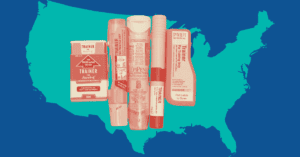
How Prepared Were School Nurses For Medical Emergencies?
More and more children are living with chronic diseases than ever before. As children spend most of their time at school, schools must be prepared for when one of these diseases manifests acutely, whether that is Becky going into anaphylaxis after consuming her allergen or George experiencing a seizure. Before Code Ana works with a school, we like to assess their current preparedness status, including what medical conditions are represented in their school and what practices and policies are already in place. We wanted to expand on this idea try to identify factors that predict whether a school is highly prepared or underprepared.
We surveyed school nurses in two school districts in central Virginia with the goal of assessing their schools’ preparedness to handle medical emergencies. The survey had three primary components: medical demographics of the school, preparedness on an individual level (whether students had their action plans and emergency medications at school), and school policies as they pertained to different medical conditions (e.g. response protocols, allergen-free zones). After analyzing the results, we found significant heterogeneity between schools on all aspects of the survey. Even within each school district, individual schools had differing policies and their student bodies had varying levels of compliance regarding documentation and medication on file. We stratified the data several different ways to look for a correlation that might help explain some of the differences, but none of the measures were associated with preparedness, including the socio-economic status of the student body.
There is evidence dating back to 1998 that schools are underprepared to manage medical emergencies. Various organizations have attempted to fill this gap: in 2013, the Centers for Disease Control and Prevention published “Voluntary Guidelines for Managing Food Allergies in Schools and in Early Care and Education Programs”; in 2021, the Journal of Allergy and Clinical Immunology, a preeminent academic allergy publication, published “Prevention and management of allergic reactions to food in childcare centers and schools: Practice guidelines.” Despite these efforts, our data shows little has changed in the past 20 years. School staff are already pulled in so many different directions and have limited time to read, digest, and implement lengthy guidelines into their school’s existing practices and policies. Filling this need is central to Code Ana’s mission. We aim to provide schools the knowledge they need along with actionable steps to keep their students safe, all while working within their bandwidth.




